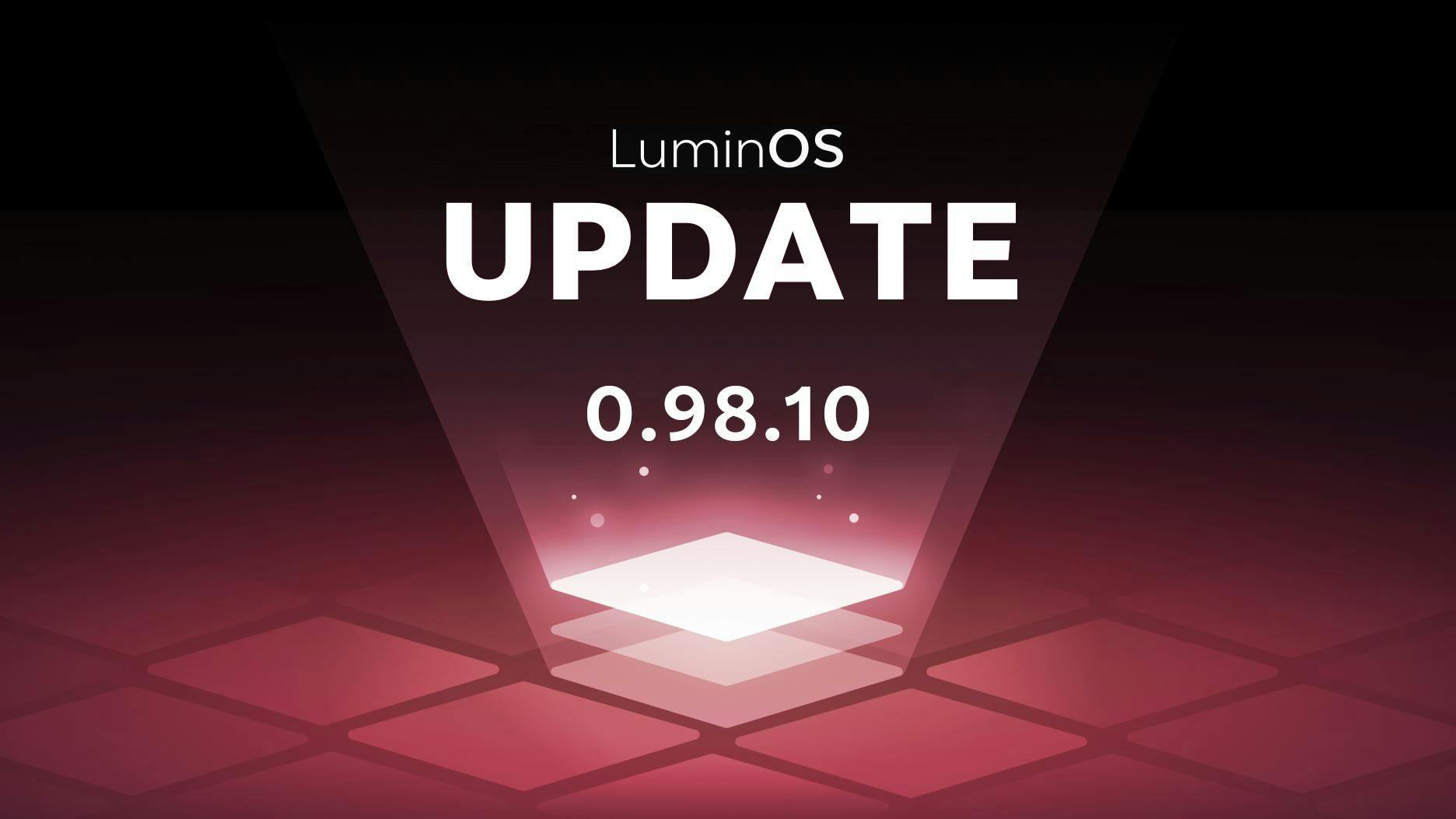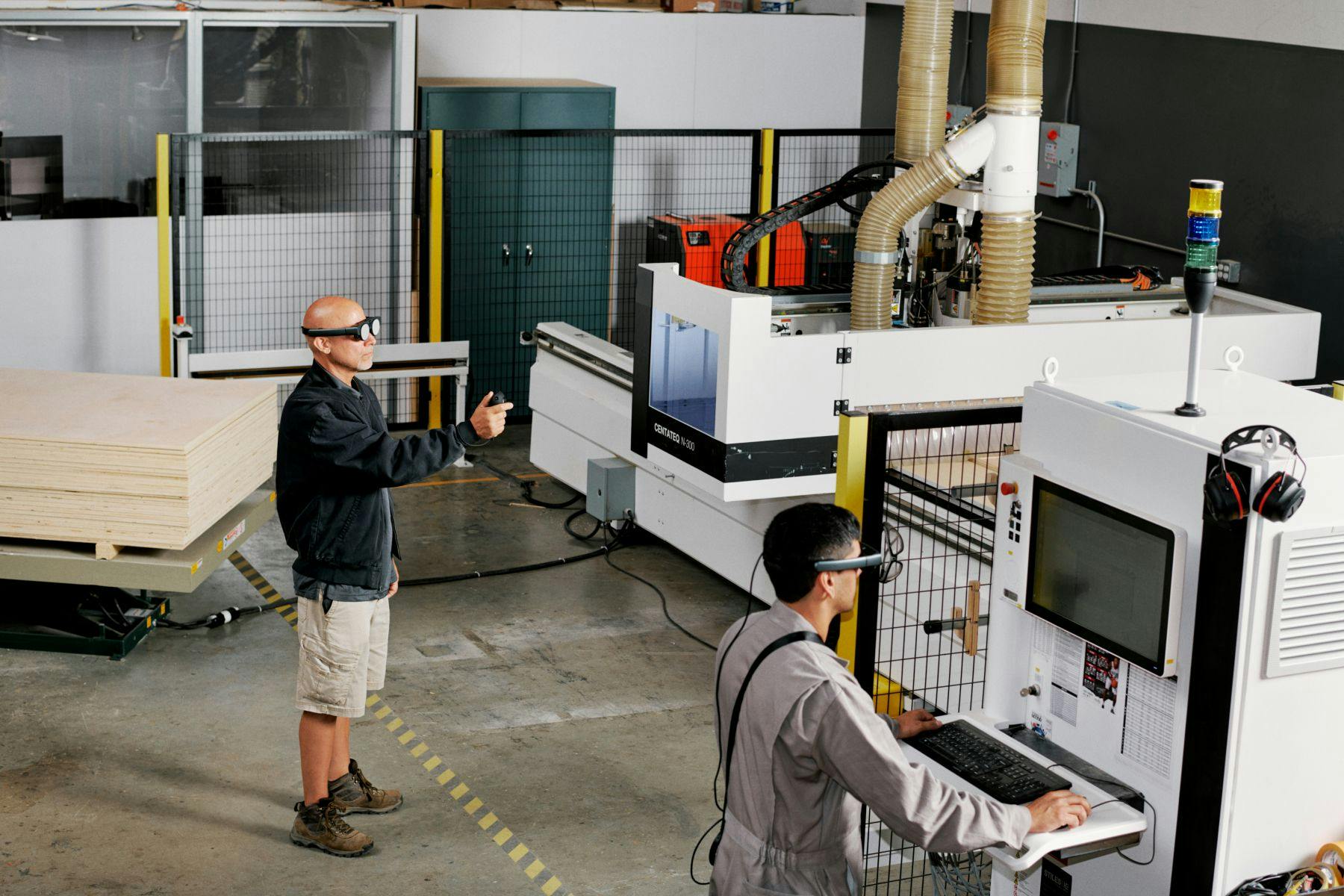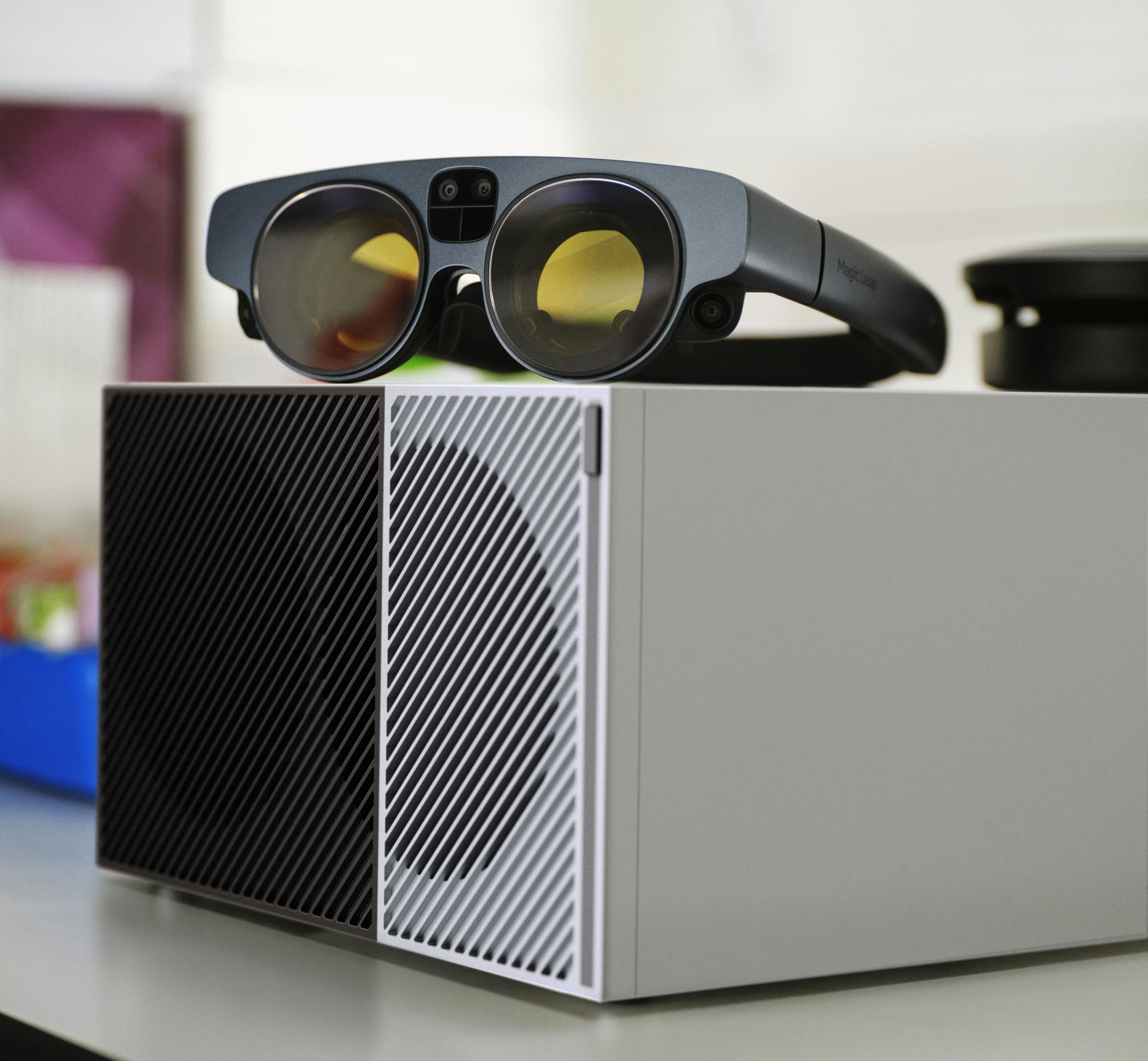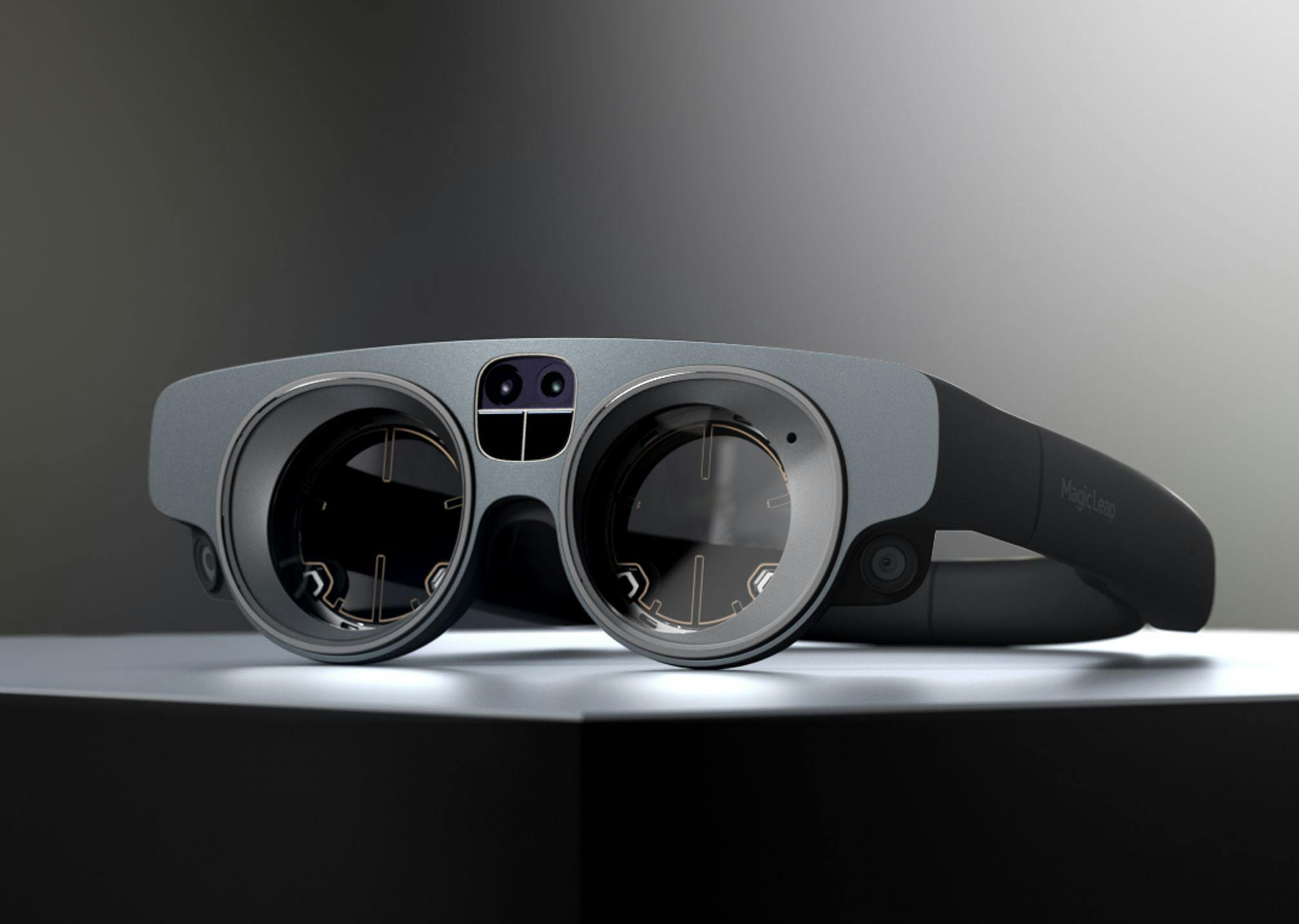News
March 17, 2020
Lumin OS 0.98.10
We've just released Lumin OS 0.98.10, the latest version of our spatial computing operating system, and we’re enabling apps to be published by developers based in Japan.
Yannick Pellet
SVP of Software

Our latest software update provides users with various new on-device features that enhance the 3D visualization workflow, enterprise device management, multi-user functionality, voice and gesture control, and we’re launching our app store, Magic Leap World, on the web. Customers who purchased our Professional Developer package will receive early access to the Lumin OS 0.98.10 update. The release is also available for direct download on our Developer Portal. Over-the-air updates for Lumin OS 0.98.10 start rolling out on March 16th and will continue through the remainder of the week.
We’re also releasing Lumin SDK 0.24. If you’re a developer and interested in what’s now possible with the latest version of our SDK, check out our blog post here.
Our community of developers and enterprise customers is growing globally. In 2019, we expanded internationally to the UK, Germany, France, Spain and Italy. In conjunction with our partners at NTT DoCoMo, we’re enabling apps to be published by developers based in Japan, to users located in Japan, and in Japanese (but platform-level text such as titles and descriptions will still be in English as we’re working on platform-level support for Japanese). If you haven’t yet, we recommend you take the time to update your home country on your Magic Leap ID. This ensures you’ll see the most relevant apps available in your region. You can find instructions on how to do that here.
Introducing Desktop Companion App
As we’ve been working with more enterprises to develop solutions that enhance communications, collaboration and copresence, 3D visualization, training and assistance, and location-based experiences, we’ve gained insight into what types of tools we can develop that improve upon the modern workflow. As part of the release of Lumin SDK 0.24, we’re enabling more developer features to promote the creation of apps that start to bring the advantages of spatial computing into communications apps. We’re leveraging those same features to deploy our own applications to enhance the way that enterprises do business.
The Desktop Companion App (DCA) is a new tool that allows 3D designers and modelers to quickly, easily, and securely share what you’ve created on a 2D screen to a Magic Leap device. With DCA, you can now see your work spatially, improving the speed to transfer 3D files onto Magic Leap 1 and streamlining the design and review process. It’s these types of experiences that show the true power of spatial computing. Designing a car or an architectural model on your PC? Push it to your Magic Leap 1, and in seconds you’re seeing that car in front of you, sharing it with a coworker or a client, and seeing how the pixels you pushed manifest in the real world. You can download DCA here.
At its core, DCA is a secure bridge between a user’s PC (Windows or Mac) and Magic Leap 1 or Magic Leap One Creator Edition. With DCA, a user can manage files, access file info, utilize scriptable file plugins with 3rd party apps such as Maya, and view device status. This marks the first direct connection between PC and Magic Leap hardware for enterprise users, and enables people using 3D design software to quickly push content to device. Once on device, you can review it in 3D, walk around the object, annotate it, and capture screenshots from your annotations to reference back on your computer. All of this can be done independently, or you can collaborate on your object in real-time with another person wearing Magic Leap 1 who is located in the same room or remotely. We’re continuing to iterate on DCA to make it inclusive of our vision for seamless collaboration, communication, and copresence in enterprise. You can also learn more about the plugin architecture we’ve created that allows any format provider to integrate with DCA in the latest update to Lumin SDK.
Introducing Meetings & New Multi-User Functionalities
What is a meeting? In a business context, it’s a purposeful gathering. Today, we meet in one of two ways: in person, or in real-time via a screen, be that with audio or video chat. Nearly every business spends excessive amounts of time and capital because meeting in person is far more productive than meeting remotely. The promise of spatial computing is to make meeting across physical space feel more like meeting in person. We should be able to both see and feel the presence of the person we’re meeting with, and we should be able to collaborate as if we were in the same room. With many companies and individuals currently struggling to travel for in-person gatherings, these types of spatial collaboration apps are the next best way to work.
With Magic Leap One Creator Edition, we launched Avatar Chat and Casting, allowing you to connect with friends across time and space using Magic Leap devices. We're now evolving these features toward an enterprise-ready collaboration platform: “Meetings.” This update, which we're releasing as a beta version, allows you to chat, share, and collaborate on 2D and 3D content with both local and remote users. We're also introducing beta collaboration features in our Gallery app that allow you to draw and comment on 3D .glb models in Meetings (.glb files can be imported and updated seamlessly through the Desktop Companion App). And our "Outfit" app allows you to personalize your avatar for use in Meetings.
We’re also introducing features that make it easier than ever to collaborate with coworkers through multi-user experiences. Previously, to join a multi-user experience, you needed to invite someone via Invitations. This user experience wasn’t always conducive to quickly joining multi-user experiences, so we now support “Meeting by Code,” where you can easily punch in a 4-digit code to join an experience.
Other New Enterprise Features:
Alongside DCA, we’ve added some new admin functionalities to Device Manager, our software that gives your organization the support and tools you need to use and manage your Magic Leap devices, apps, and identities. These include the ability to sideload apps without a network connection, as well as the ability to turn off features such as automatic downloads of over-the-air software updates.
Enterprise IT admins can also define spatial mapping settings for their employees, including the ability to enable (or disable) Shared World for their enterprise users. Shared World is the Magic Leap system that allows for persistent digital content over time and merges real world spatial mapping data collected across multiple sessions and multiple devices. With this functionality, admins have greater control of the way their organization’s Magic Leap devices share data. You can learn more about spatial mapping and the available spatial map storage options here.
Reenvisioning Magic Leap World
With this release, we’re laying the foundation for the future of Magic Leap World by releasing a version of Magic Leap World on the web, as well as updating the Magic Leap World interface on device.
Historically, you’ve only been able to learn about Magic Leap apps by putting on a device or checking out some of the apps we share on our website and blogs. As our catalog has grown, we want everyone to understand how the Magic Leap ecosystem is evolving with different types of content being released almost daily. At the same time, we want developers to more readily be able to share their creations with those who may not yet have a device. The web is the world’s biggest stage, and now you can view the entire catalog of Magic Leap apps from any device with a browser.
We’ve also revamped the design of Magic Leap World on device. Previously, Magic Leap World was on-demand and resembled app stores that you’re used to seeing on screens. As designers and engineers, we’re all working to understand what is possible now that we can pull content outside of a screen. Magic Leap World was our first attempt at allowing you to find and discover the apps you want and need. Along the way, we’ve recognized that we can do so much more with the app discovery process. On the web, we’re introducing new ways to visualize how an app will look in your space. On device, we’re evolving beyond the container of a single app and into richly-informed, layered experiences. On both web and Magic Leap 1, Magic Leap World will continue to evolve from that traditional app store to the future of app discovery and commerce using spatial computing.
Additional feature updates
With each OS update, we iterate across system-level features to improve the way that you interact with spatial content. We’re introducing an all-new apps layout on the device that allows you to see more of your apps at once (up to 21), as well as to filter apps by category, such as Screens and Concepts. Notifications are now ephemeral so they’ll disappear after being displayed.
We’re also introducing some exciting new features for our Helio browser. You can now lay Helio pages flat on your table or floor, making it more intuitive than ever to view content such as maps. Additional streaming support means that you’ll be able to stream more on-demand content via Helio, including Amazon Prime Video, Disney+, and AT&T TV Now.
We’re making notable strides as well in improving voice and gesture control. You can now stream to Twitch by just saying, “Hey Lumin, stream to Twitch.” We’ve also added an experimental setting to allow you to interact with the in-device interface by using your hands to open and move apps or select UI buttons.
Behind what you can actually see and touch on Magic Leap 1, we’re always improving our underlying technology to make the apps you use more aware of the space around you. With this update, we’ve redesigned how you can set up your spatial map settings. Spatial maps are a critical part of the Magic Leap ecosystem and help the platform enable interactions between digital content and your actual physical surroundings. Our device sensors continuously scan your environment, process that information, and use it to create 3D representations of your area. These spatial maps include different levels of detail, and you can now choose whether to store certain levels of detail on your device or in one of our cloud-based storage options. Storing select features in our cloud may enable you to participate in multi-user collaborative experiences and in cross-platform experiences on iOS or Android devices. In some situations, it may also allow the device to recognize where you are more quickly and accurately.
Learn more about spatial mapping here and your options for storing your spatial maps here.
What’s Next
Historically, Magic Leap has been releasing large OS and SDK updates every 2-3 months, with each release carrying several hundreds of requirements, bug fixes, and architectural changes. You can now take a look at a summary retrospective of our releases via this Trello board we put together to showcase the hard work that’s gone into furthering this platform over the last several years. We’re going to continuously update that board with new releases as they come out, and once ready, we’ll also add elements of our roadmap for your visibility. I would like to take the opportunity to once again thank the Magic Leap team for all their amazing achievements since we launched in August 2018.
Last December, Magic Leap 1 and Lumin OS 0.98 were released with a strong enterprise focus. As we’ve worked with more enterprise partners and customers, we’ve been inundated with exciting platform feature requests, many of which overlap with requests from our developer community. This creates a lot of movement in our feature queues, which we need to address quickly to support our new customers and developers. In order to address those requests in a more effective way, moving forward, you can expect our release cycles to be dictated more by the needs of our customers. We plan to accompany these updates with insights into how partners are leveraging our newest features.
As a sneak peek, some of the major areas we are working on and may release in the coming months include updates to the Magicverse (SDK as well as other enterprise features), object recognition, and major developments for on-premise support among others. These business-driven releases will accelerate the next phase of our go-to-market as we support more customers and partners around the world.
Latest Content
Blog
April 22, 2024
Improve precision and efficiency with Magic Leap 2 for AEC
Blog
April 2, 2024
Enhance manufacturing productivity and operational excellence with Magic Leap 2
News
March 25, 2024
NVIDIA IGX + Magic Leap 2 XR Bundle Now Available
Blog
March 22, 2024



